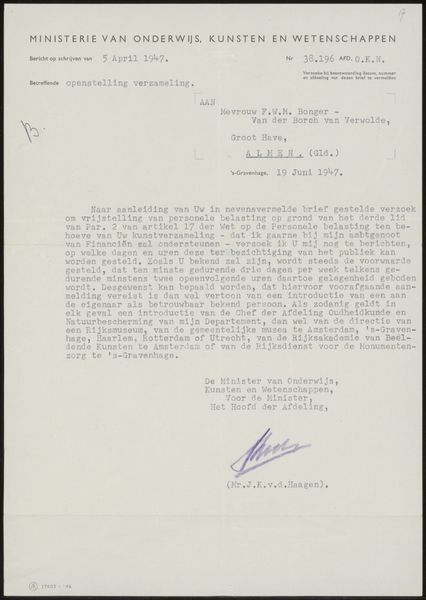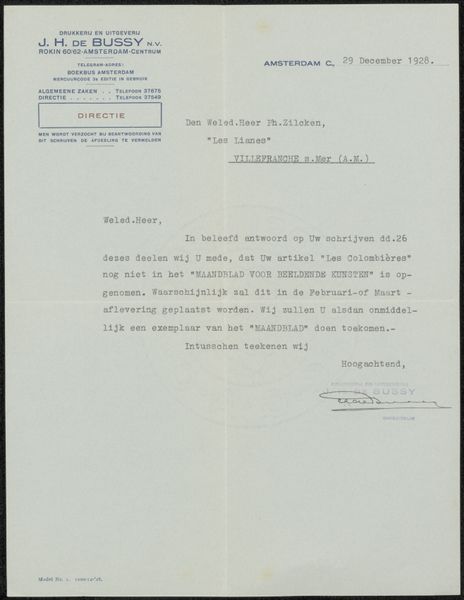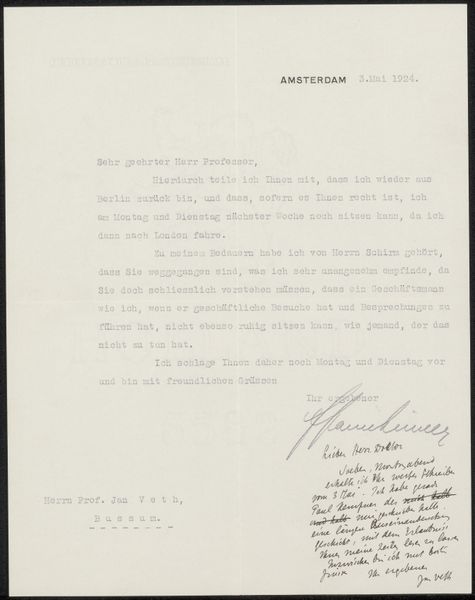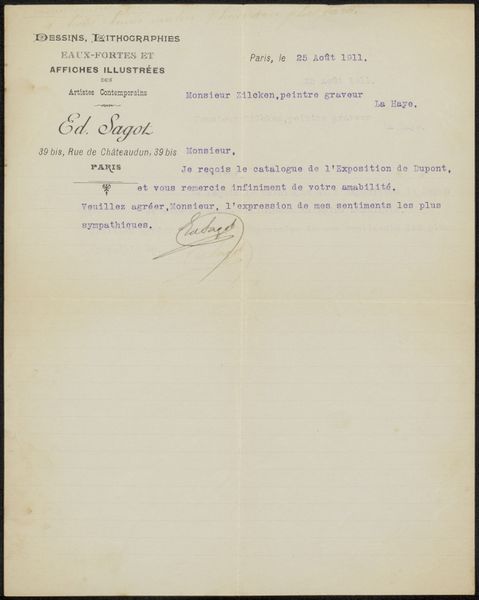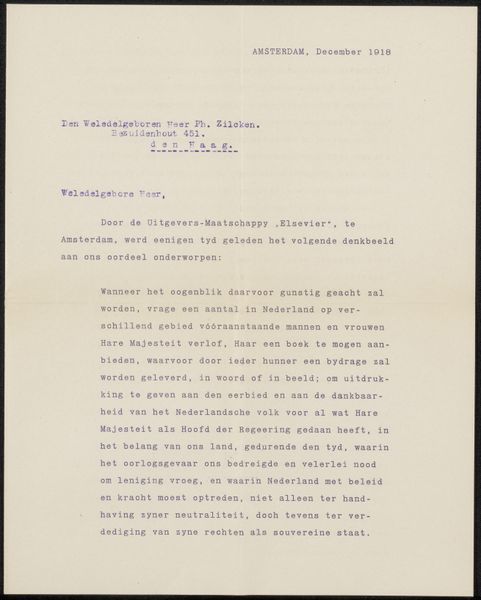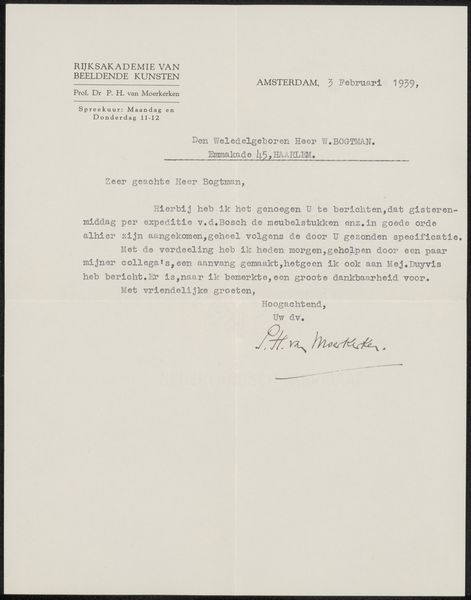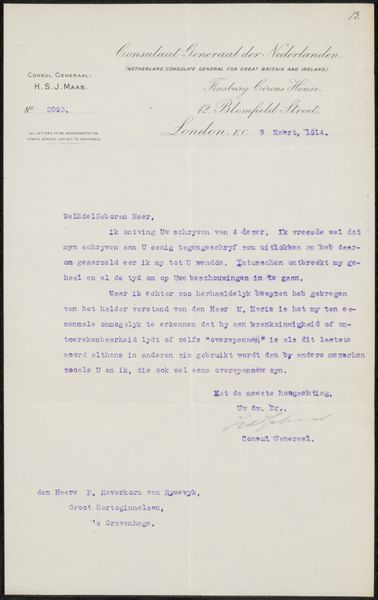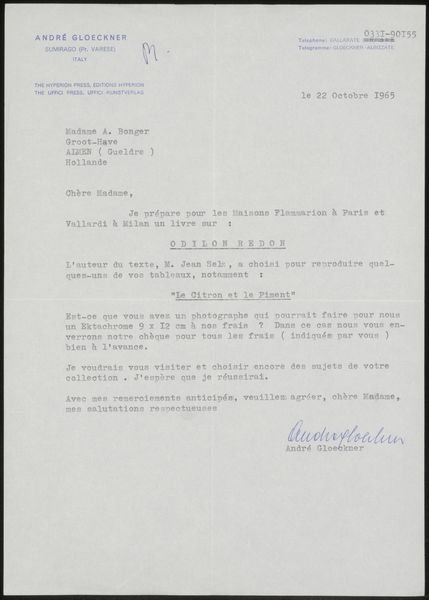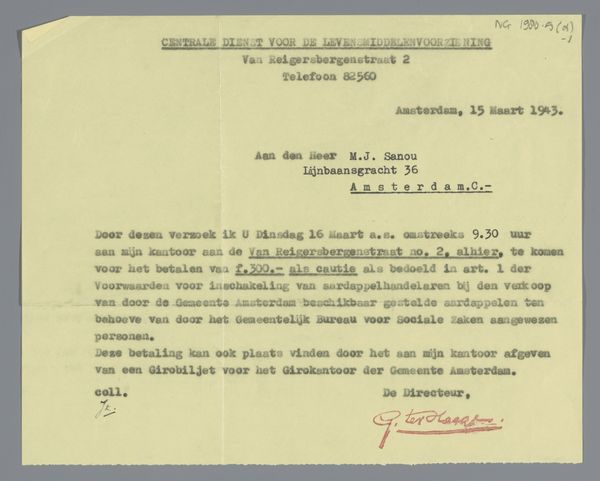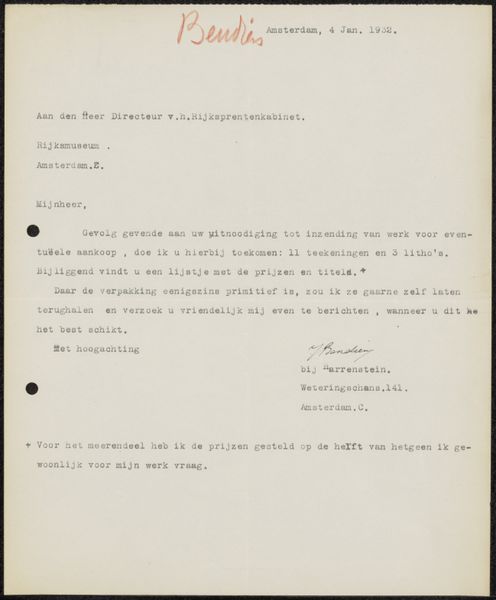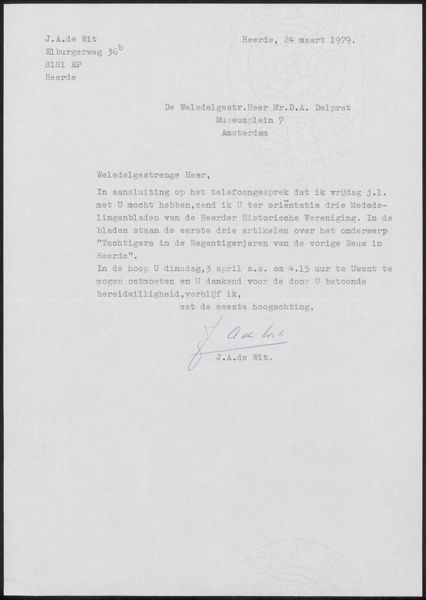
print, paper, photography
#
photo of handprinted image
#
aged paper
#
homemade paper
#
pale colours
# print
#
paper
#
photography
Copyright: Rijks Museum: Open Domain
Curator: This work is titled "Brief aan Françoise W.M. Bonger" – or, "Letter to Françoise W.M. Bonger" – dating to around 1940-1947. It's a photographic print on paper. The Rijksmuseum possesses the print, revealing its journey through time and archives. Editor: At first glance, it has an austere presence; a very muted palette with what appears to be a uniform light. Curator: Absolutely. And that perceived "uniform light" may belie the conditions and politics under which it was produced. It presents a correspondence sent from the Director of the Rijksmuseum to the Baroness Bonger during a tumultuous time, potentially wartime. Understanding Françoise Bonger's background is critical: She was the widow of Theo van Gogh and key to Vincent van Gogh's legacy, tirelessly promoting his art and ideas. This letter, a simple gesture of gratitude, speaks volumes about the institution's relationship with a vital figure in art history and their active management of artist documentation. Editor: The typography, so direct and utilitarian, reinforces that sense of immediacy. And the compositional balance, with the heading offset to the top-left against the typed script, hints at its practical function and origin as official correspondence. Did you notice the clear separation of the different elements within the whole? It does echo an early Constructivist layout, in some ways. Curator: The placement certainly allows one to consider not just the textual content but also the spatial relationship, adding layers to the communication’s narrative. Furthermore, reflecting on paper used and production during those years might reveal material constraints and how the very means of producing and preserving this letter was deeply impacted by sociopolitical conditions. It compels one to question not just what the letter says, but what it embodies as a historical artifact. Editor: It’s certainly fascinating to see something so unassuming reveal itself layer by layer. From my point of view, the visual organization is what invites closer examination of the formal qualities first. Curator: Precisely. I'm compelled to wonder, beyond this artifact itself, how Bonger, as a woman in this moment, continued shaping perceptions and managing an incredible art legacy.
Comments
No comments
Be the first to comment and join the conversation on the ultimate creative platform.


